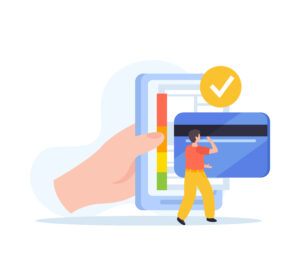Third-Party Risk Management and AI: What Boards Need to Know

Vendor Risk Isn’t Going Away
In 2024 third-party access was implicated in 35.5% of recorded breaches, with file transfer and remote access tools among the most commonly exploited vectors. At the same time, surveys show rapid uptake of third-party risk management and AI in security tooling. One industry study reports that 73% of organisations have integrated AI into cybersecurity strategies. Companies like Prevalent, OneTrust, and BitSight are leading in providing AI-driven TPRM solutions. They give firms better visibility and deliver predictive insights. The collision of these trends creates a paradox, where more automated visibility coexists with increasing systemic exposure. Analysts note that supply chain incidents now take an average of 280 days to detect. This is up from 230 days just three years ago. This situation illustrates both growing complexity and the critical need for better monitoring.
Boards Face a New Operational Reality
Boards now ask three blunt questions. They ask: who is accountable? What can fail? How fast can we detect it? Third-party risk management and AI promises answers, by automating intake, continuous monitoring, and anomaly detection. Firms using AI can compress vendor assessment timelines from months to days. They can also flag risky behaviour patterns across thousands of suppliers. Vendors that supply critical infrastructure, cloud services, or file transfer software create systemic risk. They concentrate this risk similar to how a single overloaded bridge concentrates traffic risk. Recent industry analysis warns that organisations with 1,000 to 5,000 vendors are among the most exposed. Such organisations frequently experience repeat incidents. They also suffer from long detection times. Case studies in the financial sector show that firms using AI-enabled dashboards. These include platforms from Prevalent and OneTrust. They reduced response times to vendor alerts by up to 60%. This highlights a tangible operational advantage.
The Limits of AI
AI is not a plug-and-play cure. Many AI models rely heavily on the quality of data feeding them. Vendor data is often messy. It is also incomplete and delayed. Governance remains immature. In a recent survey, only 17% of organisations had fully implemented technical controls for AI governance. This suggests that deployment often outpaces oversight. Adversaries are also weaponising AI, accelerating reconnaissance and exploitation, which forces defenders into an arms race. Nearly 47% of organisations now cite adversarial AI advances as a top concern. These attacks use generative models to identify vulnerable access points faster than ever before. Third-party risk management and AI requires careful implementation to avoid creating blind spots or overreliance on automated systems.
Hotspots of Vendor Risk
Three categories dominate loss events. First, operational concentration, where multiple business units rely on the same vendor. Second, technical exposure, where vendor software provides privileged access, as with file transfer platforms. Third, data provenance, where sensitive customer or employee data moves through opaque pipelines. SecurityScorecard and incident analyses reveal that ransomware and supply chain compromises often exploit these exact failure modes. A breach recently occurred at a mid-sized healthcare provider. It was traced to a single outsourced software vendor. This breach forced a 48-hour shutdown that affected patient services nationwide. It is a stark example of systemic vulnerability. By integrating third-party risk management and AI, firms can identify these hotspots earlier. Platforms such as BitSight help firms act decisively.
AI’s Playbook for Risk Management
Deploying AI effectively requires treating it as an augmentation to human judgement, not a substitute. Practical implementations split into three layers. First, discovery and profiling, where AI enriches vendor records with telemetry and public signals. Second, continuous scoring and predictive analytics, where models surface vendors trending toward distress or compromise. Third, orchestration, where AI recommends contract clauses, controls, or offboarding actions for human sign-off. Firms using these layered approaches report faster triage and more focused remediation. Additionally, some multinational organisations now integrate financial health scoring and geopolitical risk indices into AI models, adding nuance to predictions.
The Danger of Monoculture
AI can create monocultures. If multiple buyers rely on the same risk scoring vendor, a modelling error can cascade across industries. That single-point-of-failure problem is already visible in vendor ecosystems, where platform dependencies concentrate risk. Directors should demand transparency about vendors’ data sources, model validation, and fallback procedures. The collapse of a widely used cloud security vendor in 2023 demonstrated an important lesson. Overreliance on a single AI-based scoring system can amplify exposure. This happened across dozens of firms simultaneously.
Five Actions Boards Must Take
- Recalibrate metrics, focusing on mean time to detect for third-party incidents, not just number of assessed vendors.
- Demand model provenance, including test coverage, data lineage, and bias audits.
- Stress test vendor failure scenarios, especially those involving shared infrastructure, and price continuity plans accordingly.
- Invest in contractual levers that force upstream security hygiene, and insist on continuous evidence, not static attestations.
- Treat AI-enabled automation as a force multiplier, with clear human escalation paths. Boards that combine these steps with third-party risk management and AI see significant improvements. They report a 40-50% reduction in vendor-related operational interruptions within the first year of implementation.
The Stakes for the Next Decade
Third-party risk management and AI will determine which firms survive. They will face supply chain shocks and cyber disruption in the next decade. AI can turn vendor networks from blind spots into strategic advantages. However, this is only possible if firms combine automated insight with disciplined governance. They must also include scenario planning. For executives and boards, the test is not whether AI is deployed. The key is how it is governed. It is also crucial to prevent a single vendor failure from becoming a company failure. Firms that successfully embed AI into TPRM workflows are not just defending against breaches. They are also gaining competitive advantage through operational intelligence. Additionally, they are leveraging early warning capabilities.





